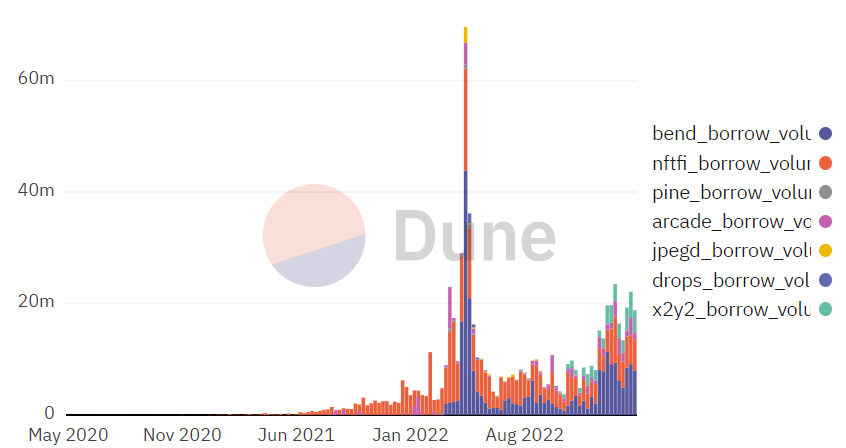DeFi

Decrypting DeFi is Decrypt’s DeFi email newsletter. (art: Grant Kempster)
Non-fungible tokens (NFTs) are getting a major facelift.
“Life was a whole lot better when you bought a jpeg, enjoyed the jpeg, and didn’t expect anything to come with it,” wrote Robness V2 on Twitter earlier this week.
It’s a comment on NFTs as exclusively pieces of art; pico top pet-rockness. They were to be admired in all their pixelated glory somewhere on the blockchain.
They were maybe swapped from time to time, with owners announcing the end of an era as ownership changed hands.

Yes, digital pet rocks are a real thing. Source: Twitter.
But that was it: Crypto art without any of the bells and whistles.
These days, though, startup after startup is rolling out a whole suite of extras, imbuing NFTs with access to Discord channels, shattering them into fractions, rehypothecating them and adding leverage. The list goes on and on.
What’s emerging, alongside the broader adoption of NFTs, is a new niche, applying a variety of DeFi technologies to drawings of monkeys and penguins. It’s called NFTFI and it wants these tokens to evolve into the heralded “money legos,” which can be plugged into different protocols to make those pet rocks a little more capital efficient.
Let’s unpack how some of the most common ideas from DeFi are being applied to NFTs.
There’s an app for that
The bread and butter of finance have always been lending and borrowing. Crypto is no different.
From OG DeFi platforms like Aave and Compound to newcomers like Euler and Notional, this market is one of DeFi’s largest.
Now, it’s coming to the NFT space. BendDAO, ParaSpace, JPEG’d, NFTfi (the brand, not the category), and a whole host of projects have emerged that let you post your NFT as collateral and borrow another asset in exchange. This lets enthusiasts shore up liquidity without having to sell their precious Doodles in the process.
“It’s really important for Web3 communities to come together in person from time to time,” emphasizes @jholguin the CEO of @doodles. pic.twitter.com/IjbrWs0BmC
— Decrypt (@decryptmedia) February 25, 2023
Lending an illiquid NFT certainly seems risky at first glance—after all, price discovery in such a market can be a super volatile experience (leaving investors clamoring to re-up their collateral lest they face liquidation).
But that hasn’t stopped roughly $23 million in borrowing activity across relevant projects. Per Dune, pulling data from Bend, NFTfi, Pine, Arcade, JPEG’d, Drops, and x2y2, the niche appears to have found something of a captive audience.

NFT borrowing activity. Source: Dune.
Users across these platforms are also steadily rising.
It’s chump change compared to users pouring into the DeFi casino, with NFT lending-and-borrowing platform figures just scraping 200 users per day across all of these projects. Still, it certainly looks to be turning into a bit of a trend.

Daily users on NFT lending platforms. Source: Dune.
After lending markets, degens are also turning their attention to trading different NFTs on jpeg-centric decentralized exchanges. Platforms like SwapStation, NFTX, Blur, and SudoSwap are all taking a crack at creating liquid markets for tokenized art.
It would also appear the niche is earning attention from some DeFi heavyweights too.
Last Summer, Uniswap splashed out and acquired the NFT aggregation platform Genie, calling its highly-anticipated NFT platform a “Google Search” for trading.
That’s just the tip of the iceberg. Below the surface, there’s tons more.
Stay tuned folks. The digital pet rocks are coming to life.
Decrypting DeFi is our DeFi newsletter, led by this essay. Subscribers to our emails get to read the essay before it goes on the site. Subscribe here.


